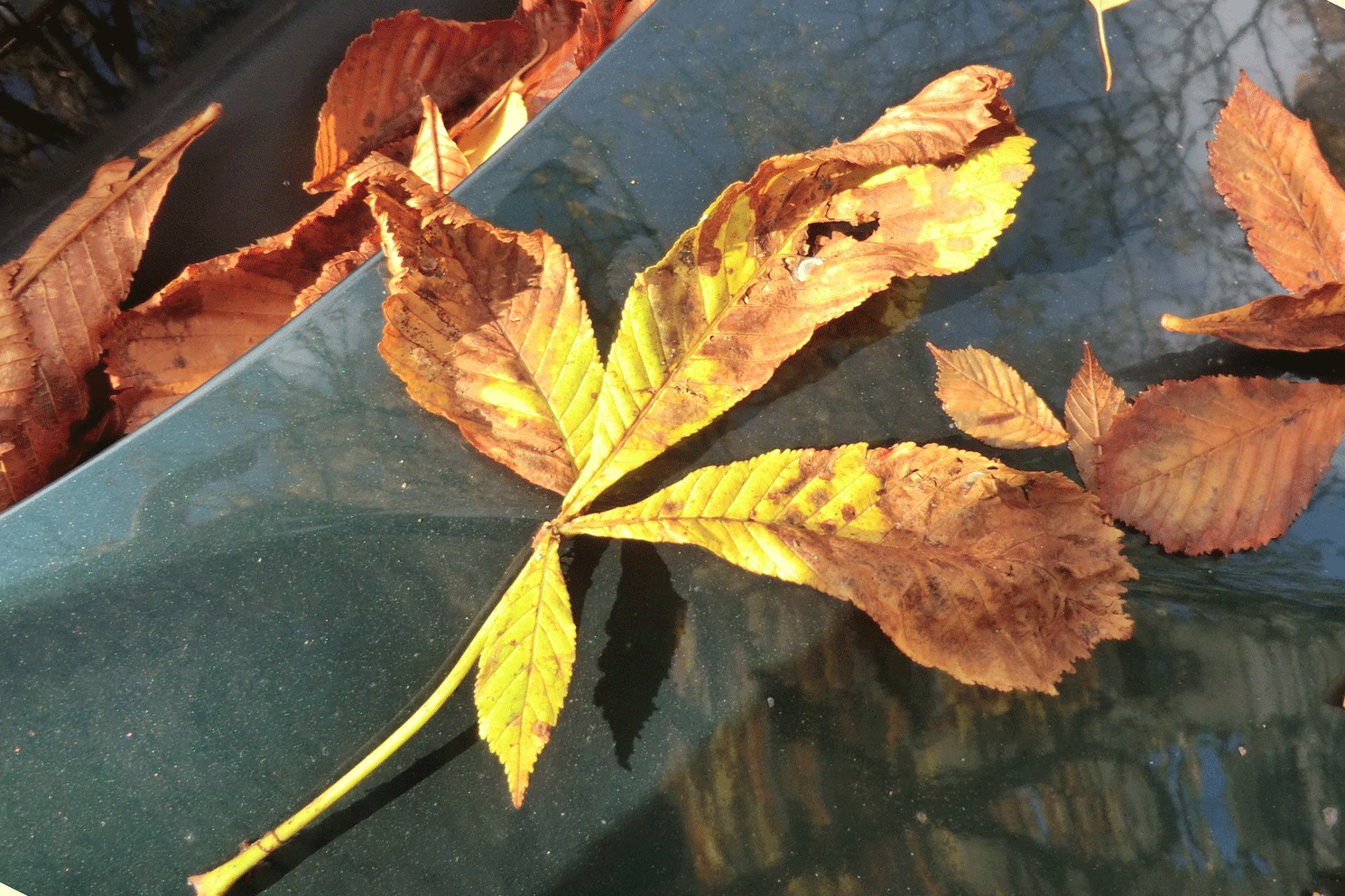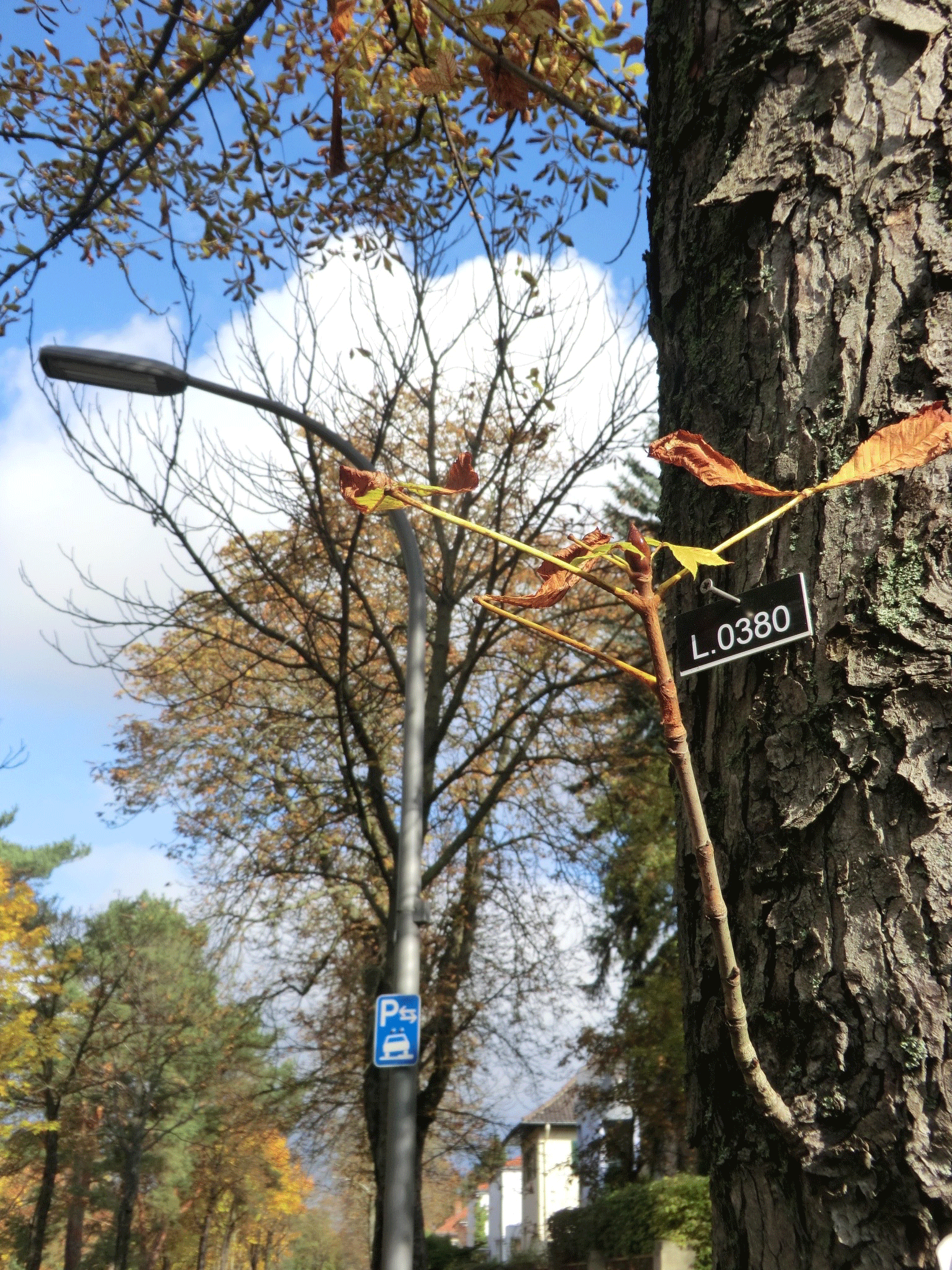Another beautiful day, I think guiltily as I wander down the road. It’s a pretty road, with a sidewalk, a trottoir, they call it here in Berlin, Germany – in a part of the country where no buffaloes but instead quite a few French-speaking Huguenots used to roam. It’s lined with flowering chestnut trees, known as Horse Chestnuts, or Aesculus hippocastana, because in ancient times the horses used to be fed the conkers – those glistening, dark-chocolate-cinnamon-colored seeds inside a spiny protective armor. The conkers cured them of coughs and other such maladies. The trees’ snowy white or deep-pink blossoms remind me of fluffy, diaphanous Southern belles sitting upright and proud in the midst of a riotous green. On a day like this – but there’ve been too many of these recently, I think to myself – I’m grateful for their graciously offered shade. And when the evening seeps in sluggishly, around 9 or 10 at this time of year, they perfume the air heavily with their sensuous, lush fragrance.
I like to imagine a single chestnut tree, many centuries ago, tucked away in happy anonymity in a shady, humid ravine somewhere in the Pindus Mountains of ancient Greece. The canyon was surely thick and alive with juicy greenery, and the chestnut was just one among a whole variety of kindred plant-spirits. Here in the Balkans, it had managed to survive the rigors of the Ice Age so many millennia before. Given the chestnut’s charms, it is no wonder that the Ottomans later so eagerly collected its seeds and cultivated the tree in the walled gardens of Istanbul. Willem Quackelbeen, the sixteenth-century physician to the Holy Roman Emperor’s ambassador under the reign of no other than Suleyman the Magnificent, reported seeing them there in abundance. Very likely they blossomed on the grounds of Topkapi Palace, delighting the eyes of silken-veiled women peeking longingly through dark, grated windows or lounging in the loggias of the harem. Some years after Quackelbeen’s missives from Istanbul, a specimen finally arrived in Vienna – maybe on the back of a horse, maybe a mule, maybe even on a camel. The year was 1581 when a man by the name of Clusius, a court-servant to His Roman Imperial Majesty Maximilian II, wrote about the unfolding of the chestnut leaves in springtime Vienna. The tree went on to become a favorite in European cities, especially in the Victorian era, lining stately lanes, parks, and squares. Berlin cannot be imagined without the brilliant green, white, and pink of the chestnut trees in early summer along so many of its wide avenues. They offer an indispensible shady canopy over the long wooden tables of the beer gardens so popular all over Germany.
Here in Europe, heat records are being broken more often than not: long-term, Berlin summers seem to be getting warmer. I inspect the bark of the tree that I am passing by, hoping to catch a glimpse of one of the tiny horse chestnut leaf-miner moths I’ve heard about, ex-patriots like these trees and like myself. No one really knows their origin but they were first discovered not long back on the shores of Lake Ohrid, one of Europe’s deepest and oldest bodies of water. The lake straddles the mountainous border between southwest Macedonia and eastern Albania like a dazzling, translucent aquamarine. It is oligotrophic – feeding (τροφικός) only a few (ὀλίγος) – and thus has very little in the way of nutrients. The result is water that is crystal clear, limpid and luminous, transparent to a depth of an amazing 66 feet. Only the most perfectly adapted life can survive in this blue-green, watery realm, but amazingly enough, there are over 200 species that are unique to this lake alone. I visualize the little leaf-miner moth, Cameraria ohridella, contentedly at home in the chestnut trees, along the shores of such magnificence.
Gazing upwards into the still brilliant green of this tree’s crown, I wish I could see the moths up close: their wings of metallic ochre, their black sides with the slim white stripes, their reddish-brown tufts at the tail, the fuzzy amber-tinged headpiece. The adult Cameraria is only a little bit over a sixteenth of an inch long. Such a distance they have traveled, these small Macedonian wanderers, who have recently been hitching rides on cars, trucks, trains, happy to find their favorite foods even in such northern climes.
On these long summer days, when the sun comes up as early as four or so, the leaf-miner moths have already emerged at the break of dawn, fluttered over to the trunk of the tree and mated – long before I have even awakened. The female lays her eggs – twenty to forty of them – on the skin of the leaves. She likes to leave them close to one of the many parallel lateral veins that are so typical of chestnut leaves, where they then develop over the course of the following two to three weeks. And when these eggs hatch – but not just these eggs, for outside the window on “my” tree alone there are hundreds or thousands of eggs – the larvae slip out, a mere one and a half millimeter long, flattened almost to invisibility, ideally adapted for life inside a leaf. They immediately get on with their job as “juice slurpers,” tapping the veins, burrowing a strip right close to the nerve of the leaf. By the time this is done, they’ve metamorphosed into “tissue eaters,” mining the leaf for nourishment. They then expand the tunnel into a circular form, until they’ve burrowed out a truly gigantic shape measuring up to an inch and a half wide. If there are lots of these on one leaf, they sometimes run into each other, burrows connecting to burrows. Soon they’ll spin their cocoons and settle in for a good 12 to16 days of life as pupae – little moths with pointy heads, the better to bore through the cocoons and the skin of the leaf. When the time comes they will emerge into the sun and the air and the welcoming green of the chestnut’s crown. And the cycle will begin again, outside my window, all through the warm summer days that, increasingly, are oddly warmer than they used to be, and drier.
Aesculus hippocastana, our chestnut tree, is a patient host. For many weeks it shows no sign of fatigue, but as the season drags on, its initially fresh green leaves become overpopulated with the reddish-brown irregular-shaped burrow-spots. Soon the leaves wither and drop, and the dry bones of the tree seem to silently cry out: “How many more generations must I suckle?” How long must I endure?” A year can yield two generations of moths, sometimes four, sometimes even five if weather permits. Lately, weather has been permissive to a fault, and mating and egg-laying can easily continue into the still-warm days of Fall. The last generation of eggs over-winters on the dry, dead leaves scattered thickly on icy ground. Six months later, as the sun gains strength, the pupae will show signs of life and soon mating will begin. The circle remains unbroken.
Europeans are attached to their Horse Chestnut trees. Bidding a final farewell to their old friends would not be easy. The trees still stand sturdy and proud. But as summer progresses, people throughout the city will be seen raking. Under the trees’ vanishing shade, large heaps of leaves will line the sides of the streets ready to be picked up by the city, which will dispatch with them according to regulation. The dry leaves, bearing their pupae, so carefully cocooned for the winter, will burn in an instant at the strike of a match. Incineration will stem the tide.
The dry leaves, bearing their pupae, so carefully cocooned for the winter, will burn in an instant at the strike of a match. Incineration will stem the tide.
The summer is passing by lazily, almost imperceptibly. I hardly notice how the fresh green of spring has changed to a deeper green. The season has been hot and dry again this year. Another record of some sort. I love the heat. It’s what I grew up with, back in California. But I only allow myself to feel limited pleasure. Soon, somewhere in mid-July, the chestnut trees along the road will turn a dull brown, their leaves scorched and brittle.  Their crowns will start thinning. Old age will once again take summer by surprise, rearing up like a cancer, in the prime of life. Too soon, I will start raking – gathering up those first fallen leaves. They will be strewn November-like at the foot of “my” tree – identification number L.0380, according to the metal plaque the city has pragmatically nailed to its trunk. With the long, sharp metal
Their crowns will start thinning. Old age will once again take summer by surprise, rearing up like a cancer, in the prime of life. Too soon, I will start raking – gathering up those first fallen leaves. They will be strewn November-like at the foot of “my” tree – identification number L.0380, according to the metal plaque the city has pragmatically nailed to its trunk. With the long, sharp metal tines I will scratch the dry, hard earth at its foot, leaving shallow scars. I’ll still be able to see some of them in December, frozen in time by the winter cold. Once in a while, the markings of a single leaf will catch my eye – the dirty brown of affliction challenging the remains of living green. I’ll pause for a moment, pick up the leaf with, its once strong stem and its five delicately-formed leaflets, to have a closer look. Then I’ll throw it, too, upon the heap for the city pick-up. It might be late in the day, but the heat will still make working an effort. It will feel like summer, but look like fall. Uneasy, I’ll keep on raking.
tines I will scratch the dry, hard earth at its foot, leaving shallow scars. I’ll still be able to see some of them in December, frozen in time by the winter cold. Once in a while, the markings of a single leaf will catch my eye – the dirty brown of affliction challenging the remains of living green. I’ll pause for a moment, pick up the leaf with, its once strong stem and its five delicately-formed leaflets, to have a closer look. Then I’ll throw it, too, upon the heap for the city pick-up. It might be late in the day, but the heat will still make working an effort. It will feel like summer, but look like fall. Uneasy, I’ll keep on raking.

